Ælfgif-who? provides short biographies of early medieval English women every two weeks. Click on the podcast player if you’d like to hear this newsletter read aloud in my appealing Yorkshire accent.

Edith: Wife of Sihtric, Viking King of York
When Lady Æthelflaed’s daughter Ælfwyn was deposed as ruler of Mercia, King Edward of Wessex brought the kingdom under his authority. After Edward died in July 924, it is not known whether he intended his heir to inherit both kingdoms, or whether the realm would be split among his sons. The death of his son Ælfweard, only sixteen days after his own, meant that his other son, Æthelstan, who had been raised at the Mercian court, inherited the two kingdoms as a single entity. He was crowned after some delay on the 4th September 925.
One of Æthelstan’s first acts as king was to arrange a marriage for his sister to the King of Northumbria. The Anglo-Saxon Chronicle D reports that in 926:
King Æthelstan and Sihtric, king of the Northumbrians, met together at Tamworth on the 30th of January and Æthelstan gave him his sister in marriage.
A later tradition, recorded at Bury St Edmunds in the twelfth century, and later in the writings of Matthew Paris and Roger of Wendover, states that the sister who married Sihtric was named Edith, and that she was his full sister - a daughter of Æthelstan’s mother Ecgwynn. A variation of this tradition says that she was his half-sister, a daughter of his father’s second wife Ælfflaed. This information is difficult to rely upon - indeed another sister of Æthelstan’s was called Edith, which begs the question whether the Bury tradition got them mixed up.
This marriage was likely representative of a non-aggression pact between the two rulers. In the ninth century Scandinavians had established political power in the north of England, ruling over Northumbria from York. Its rulers were closely associated with the Vikings who ruled Dublin. Throughout much of the later ninth and early tenth centuries these Scandinavian settlers were the biggest threat to the rulers of Wessex and Mercia, with rulers such as Alfred and his daughter Æthelflaed famously going to battle with them. Sihtric was probably the son of King Sihtric of Dublin, who reigned from 888 until his death in 896. He and his cousins were expelled from Ireland in 902, and he became King of York in 920.
Kings of adjoining kingdoms looking to make peace usually meet at the border. The meeting between Sihtric and Æthelstan at Tamworth suggests one of two things about their relative power: either Sihtric had to travel very far into the heart of Æthelstan’s kingdom, putting him on the back foot in the meeting, or Sihtric’s kingdom extended further south than the river Humber, including much of what was once Mercia. Some have suggested that coins bearing his name were struck in Lincoln, which may indicate that this city was in his jurisdiction.
The Bury tradition tells us that it was a condition that Sihtric convert to Christianity upon his marriage to Æthelstan’s sister, but he soon reverted to his old beliefs and practices. We know that Sihtric died only around six months after this marriage, after which Æthelstan took control of Northumbria. The Anglo-Saxon Chronicle reports this with the usual phrasing when a king succeeds to a kingdom: he feng to rice, or ‘took the kingdom’. The twelfth-century chronicler William of Malmesbury states that Northumbria came to Æthelstan lawfully, as it was his by right due to this marriage alliance.
However, the process of regime change was probably not smooth. In 2007 metal detectorists near Harrogate found a previously undisturbed buried hoard, that contained 617 silver coins and 65 other objects, including ornaments and an arm-ring, buried inside a silver cup lined with gold. The Vale of York Hoard has been dated to 927, and the prevailing theory is that the hoard likely belonged to a Scandinavian who buried their wealth in the turmoil of Æthelstan’s accession. It is noteworthy that the hoard was never retrieved by the person who buried it. Æthelstan remained king of Northumbria for the rest of his life, but the kingdom slipped from Wessex control under his successor Edmund.
Image of Vale of York Hoard reproduced from Portable Antiquities Scheme under the Attribution 2.0 Generic License
So what of Æthelstan’s sister in all these tumultuous events? It is not known how old she was when she was sent by her brother to marry Sihtric, nor indeed do we have any details of how their marriage progressed. If Sihtric did lapse in his conversion to Christianity, this suggests that their marriage was not a success. It is not known if they had any children. Edith may have fled his court upon his death, or perhaps earlier when he renounced her religion.
The Bury tradition tells us that Edith returned to Mercia and became a nun at a monastery called Polesworth, near Tamworth, the centre of Mercian power. Indeed, there is a Saint Edith listed as enshrined at Polesworth in a late Old English list of where saints are buried. Her death date, and thus her feast day, was 15 July, though it is not know which year she died.
Edith, if that was indeed her name, was almost lost to history. In the contemporary sources, she is but a nameless feature in an annal explaining a meeting between her brother and her husband. Her feast day only occurs in a few post-Conquest calendars, and most of our information on her has been recorded by later writers with sources that are now unknown and difficult to verify.
However, what we do know of her is a rather remarkable story. She was sent off to marry a Viking king in a potentially hostile neighbouring kingdom, with a different culture, language and religion. She acted as the hinge on which the annexation of Northumbria by Wessex took place - the first time that all three kingdoms were unified. If the Bury tradition that links her with Edith of Polesworth is correct, she also had an impressive monastic career after she returned home, even becoming a saint. Even if we’re unable to flesh it out, the skeleton of Edith’s story is quite extraordinary.
Suggestions for Further Reading:








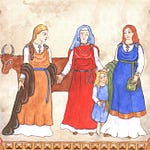
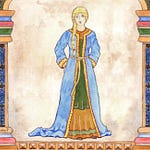
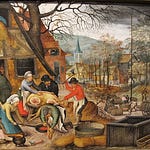
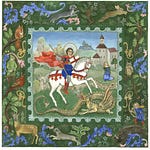



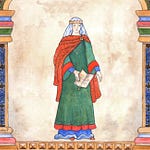
Share this post